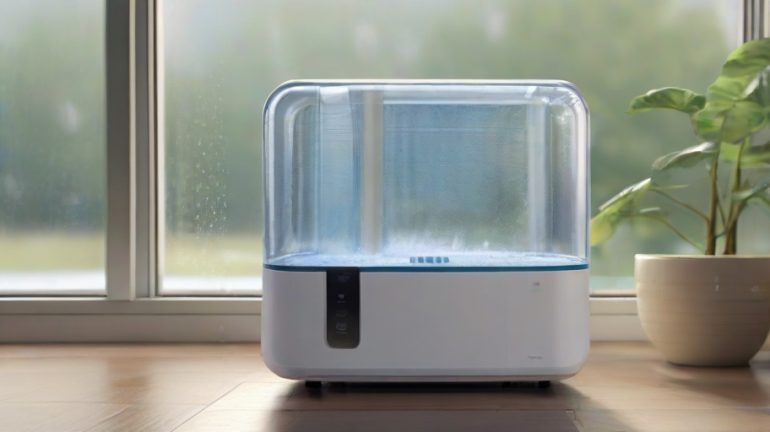Have you ever looked out of a window on a cold morning only to see infuriating fog standing between you and beyond? If you see that white stuff on your windows it’s called condensation and it can be silent, creeping and destructive towards your house.
But here’s the good news: you’re not stuck with it. Think of a dehumidifier – or maybe it is your best friend fighting wetness together with you in your everyday challenge. These invisible warriors will show us the way that they would eliminate the fog from your invaluable views as well as frames, and other essential parts of the house. Buckle up and prepare to unravel the mystery that is dehumidifying and clear out those windows.
Understanding Condensation On My Windows
You have most assuredly observed that it is caused by warm and moist air coming into touch with cold windowpanes. Relative humidity is a situation in which the air inside your house usually contains water vapors that increase their amounts as the temperatures rise.
When the warm air comes into contact with the colder surface of your windows, the moisture condenses into liquid. You see, condensation isn’t necessarily a sign of faulty windows; it’s simply a matter of physics. The temperature difference between the indoors and outdoors is what drives this process.
Keeping an eye on humidity levels inside your home can help you manage moisture buildup on glass effectively.
Causes of Window Condensation
Your home’s daily activities, such as cooking, using the shower, and drying your clothes, contribute to the moisture in the air that guides to wetness buildup on glass. This excess moistness raises indoor humidity decks. When the warm, moist air comes into contact with cold surfaces, like single-pane windows, condensation forms. It’s a simple yet troublesome phenomenon.
You see, the glass panes in your windows evolve to cold surfaces, especially during chilly weather. The temperature difference between the cosy indoors and the brisk outdoors makes your windows excellent spots for condensation. When the indoor air, laden with humidity, hits these colder windowpanes, the moistness can no longer stay airborne and consequently clings to the glass.
Signs of Window Condensation

Recognising your home’s interior window dampness signs is essential in effectively addressing excess indoor moistness. Here’s what to look out for:
- Water Droplets: The most obvious sign is the presence of water droplets or a film of moisture on the window glass.
- Fogging or Mist: A misty or fogged appearance on the window that doesn’t wipe away easily can also indicate perspiration.
- Damp Window Sills: If fogging is persistent, the window sills may be damp to the touch.
- Mould or Mildew Growth: High humidity and persistent sweating can lead to mould or mildew growth on window frames, sills, or surrounding walls, particularly in corners and near the edges where moisture accumulates.
- Damage to Surrounding Areas: Over time, glass sweating can damage paint, and wallpaper, and even cause wooden window frames to rot.
To tackle those problems, you should improve ventilation, use dehumidifiers to reduce indoor wet and increase the temperature of the window surfaces through better insulation or heating. Upgrading to higher-quality windows with better thermal performance can also help prevent condensation.
Benefits of Using a Dehumidifier to Stop Condensation
It’s very cold outside, and warmth inside means you get condensation around your windows as warm air comes into touch with the cold glass. This is where the true need for a dehumidifier shines through.
Running a dehumidifier in your home, especially in areas like the bathroom or around poorly ventilated loft spaces, can draw moisture from the air and stop those rivulets from forming on your windows, effectively tackling condensation at its core.
Why should you entrust the air in your home to a dehumidifier, you ask? Mould and condensation are more than just a visual nuisance; they can cause a home to feel damp, with a musty, stale scent.
By maintaining freshness and keeping damp levels in check, a dehumidifier combats condensation and fights the subtly invasive nature of mould. Sure, you’ve tried to insulate, perhaps left the bathroom door ajar, or avoided using the kettle too often—but a dehumidifier?
It’s the silent guardian of your indoor air, powerful enough to keep on top of the battle against condensation, even when it’s very cold outside. Many homes are surprised at how much fresher their space feels and equally stunned by the visible retreat of condensation.
Get Rid of Condensation on Windows Without a Dehumidifier

Every morning, you might find yourself wiping the windows, only to see the wetness return. Instead, try improving the circulation of air in your home—keep interior doors open, utilise ceiling fans, or even strategically place a few hardy houseplants to absorb excess moisture. These steps create a steady stream of air that can help keep condensation at bay.
For a direct approach, absorb the wetness before it condenses on your windowpanes. Disposable moisture absorbers positioned on sills work wonders, or for the DIY enthusiast, create your own with a container filled with calcium chloride. What’s more, reducing indoor dampness by air-drying clothes outdoors or using an extractor fan when cooking can drastically reduce the amount of wetness in your home.
Tackling the condensation problem doesn’t always need a dehumidifier; sometimes, it just takes a bit of ingenuity and changes to daily habits. When you combat condensation effectively, you improve not only the clarity of your view but also the health and comfort of your living space.

